Where to dig in?
Are you looking for the best soil for container gardening? You’ll achieve the healthiest, most productive container garden when you use a lightweight potting mix that combines peat moss or coco coir for moisture retention, perlite or vermiculite for drainage, and quality compost for sustained nutrition.
Avoid garden soil and topsoil since they compact in containers, block airflow, and create waterlogging issues that damage roots. Your plants will thrive with proper amendments and strategic layering techniques that optimize growing conditions.
Essential Components for Optimal Container Soil Mixes
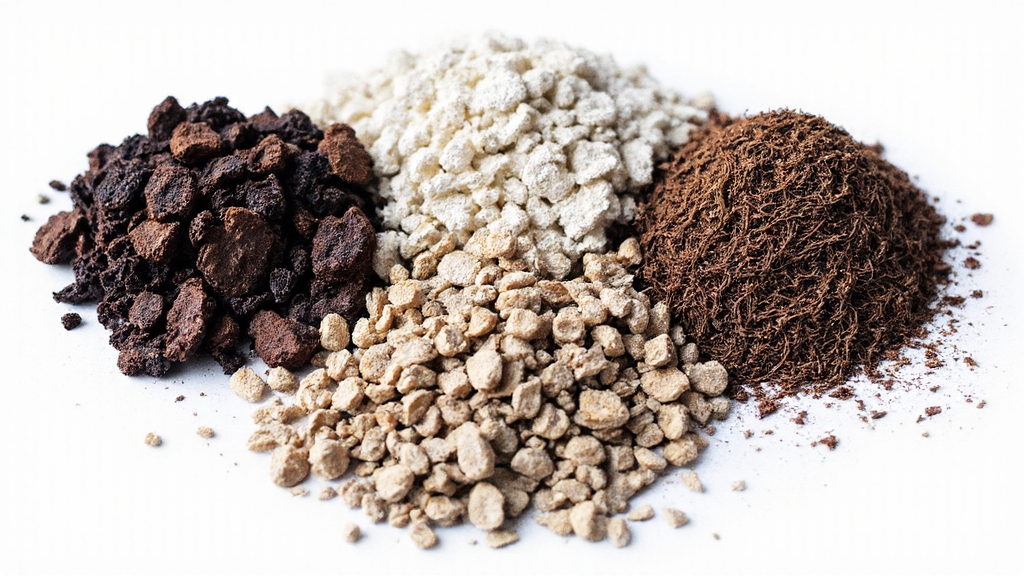
The foundation of successful container gardening starts with selecting the right soil components that work together to create an environment where your plants can thrive. You’ll need three key categories of ingredients to build a conducive mix.
Drainage and Aeration Materials
Perlite, vermiculite, and pine bark fragments create the structural foundation your plants need. These lightweight materials prevent soil compaction, allow water to flow freely, and guarantee roots get adequate oxygen.
Moisture Retention Components
Peat moss, coco coir, and compost help your soil hold water without becoming waterlogged. These organic materials keep your mix light while providing steady moisture for healthy root development. Integrating elements like biochar not only aids in moisture retention but also enhances nutrient retention, thus boosting plant health.
Nutrient Sources
Slow-release fertilizers and organic materials like vermicompost provide essential plant food throughout the growing season. Quality soil contains beneficial living organisms that give life to plants, unlike dead dirt that lacks these vital nutrients.
Why Garden Soil and Topsoil Fail in Container Gardens
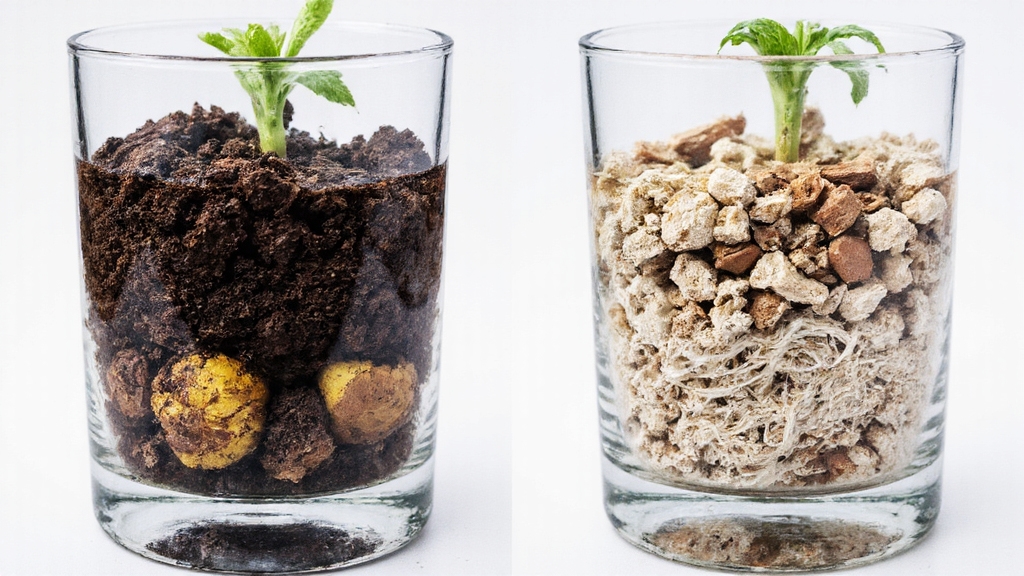
While choosing the right components sets you up for success, knowing what materials to avoid can save you from costly mistakes and plant failures. Garden soil and topsoil create serious problems in containers that you’ll want to prevent.
Drainage and Compaction Issues
Garden soil compacts in containers, blocking air flow to roots and creating waterlogged conditions that stunt plant growth.
Garden soil compacts tightly in containers, eliminating air spaces your plants’ roots need to breathe. This dense texture restricts drainage, causing waterlogging that damages roots. You’ll notice stunted growth as compact soil prevents root expansion. Loamy soil, with its ideal composition of clay, silt, and sand, provides better drainage and is often recommended for a balanced approach in containers.
Poor Nutrient Performance
Topsoil lacks the balanced nutrition container plants require for rapid growth. Nutrients deplete quickly in confined spaces, forcing you to fertilize constantly. While topsoil contains organic matter and microorganisms that benefit garden beds, these components don’t translate effectively to the confined environment of containers.
Contamination Risks
Garden soil introduces pests, diseases, and weeds into your containers, creating maintenance headaches you don’t need when sterile potting mixes eliminate these problems entirely.
Key Characteristics of High-Performance Container Growing Medium
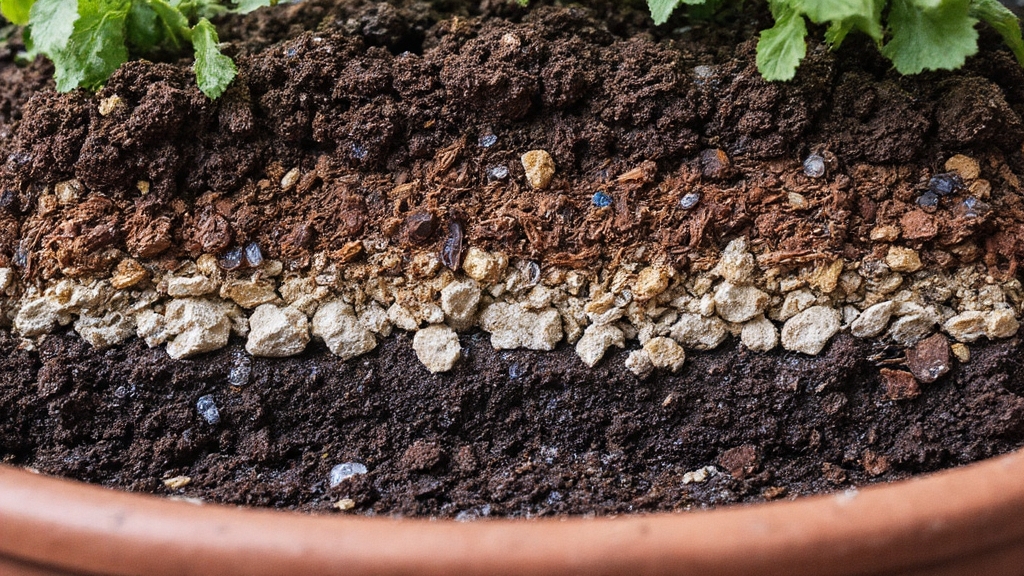
Understanding what makes container soil perform well helps you choose the right medium for healthy, thriving plants. You’ll need a lightweight mix that won’t damage containers while providing excellent aeration around roots. The medium should drain quickly but retain enough moisture for consistent plant health. For quick and efficient composting, consider using a composter like the Hotbin Mk. 2 Composter, which facilitates nutrient availability in the soil.
| Characteristic | Purpose |
|---|---|
| Lightweight texture | Prevents container damage, enables easy handling |
| High porosity | Allows air circulation, prevents root suffocation |
| Balanced drainage | Stops waterlogging while maintaining moisture |
| Nutrient availability | Supplies essential plant foods over time |
| Uniform consistency | Guarantees even water distribution, prevents dry spots |
Look for mixes containing perlite, vermiculite, and peat moss. These components create the perfect balance of drainage, aeration, and water retention your container plants need to flourish. Avoid using garden topsoil as it tends to be too heavy and can become compacted in containers.
Organic Amendments That Boost Soil Health and Plant Growth
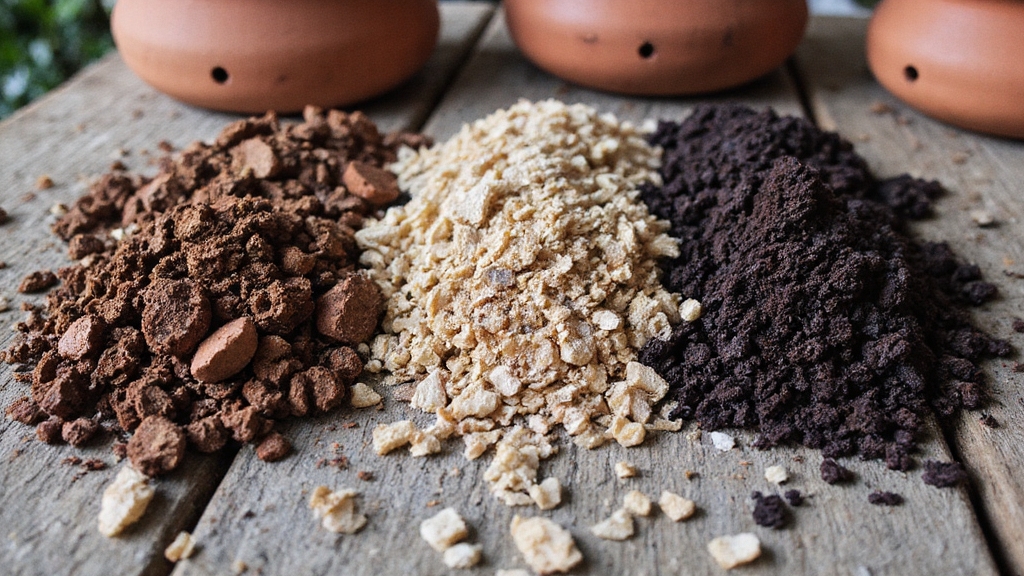
Adding organic amendments to your container soil creates a living ecosystem that naturally feeds and protects your plants. Compost serves as your foundation amendment, improving soil structure while providing essential nutrients and encouraging beneficial microorganisms that fight plant diseases. The Kent and Stowe Capability Trowel is an ideal tool for mixing compost into your soil due to its sharpened edges and durable design.
Rock dust and mineral amendments supply trace minerals your plants need, balance soil pH, and increase nutrient-holding capacity. These slow-release supplements reduce your reliance on chemical fertilizers.
Microbial inoculants introduce helpful bacteria and fungi that enhance nutrient uptake, accelerate organic matter breakdown, and protect against soil-borne pathogens through competitive exclusion.
Organic mulches conserve moisture, moderate soil temperature, and gradually decompose to add surface nutrients. Blood meal provides nitrogen for foliage growth, while bone meal supplies phosphorus and calcium for strong root development. Worm castings provide gentle, long-lasting nutrition that won’t burn delicate plant roots.
Strategic Layering Methods for Maximum Container Success
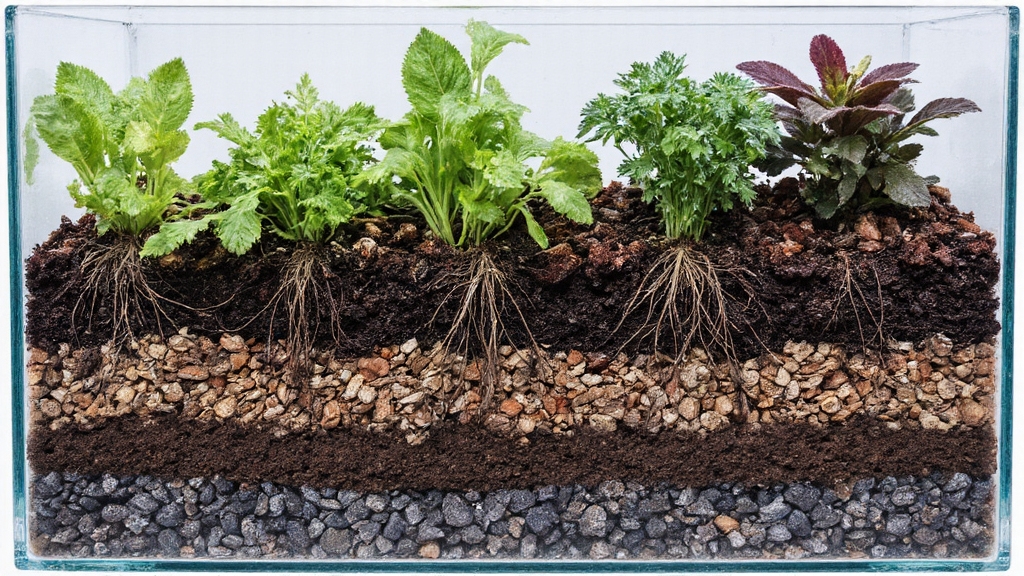
Building great soil amendments sets the foundation, but how you layer these materials in your container determines whether your plants thrive or struggle.
Bottom Layer: Drainage Foundation
Start with 2-3 inches of coarse gravel or small stones at your container’s bottom. Place landscape fabric over this layer to separate drainage materials from soil above while allowing water to pass through freely.
Middle Layer: Organic Matter Zone
Add coarse bark mulch and compost in the container’s midsection. This layer provides slow-release nutrients as materials decompose, feeding your plants gradually over time. This structured approach can increase plant survival rates by 40-60% compared to containers with mixed or unorganized soil. Consider including drought-tolerant plants like the Cuddly Cactus, which thrive with minimal watering, in these optimized soil conditions.
Top Layer: Growing Medium
Fill the remaining space with well-draining potting mix containing perlite or vermiculite. Keep each layer distinct—don’t mix them together, as this maintains proper drainage and airflow for healthy root development.
Proven Soil Mix Ratios for Thriving Vegetable Containers
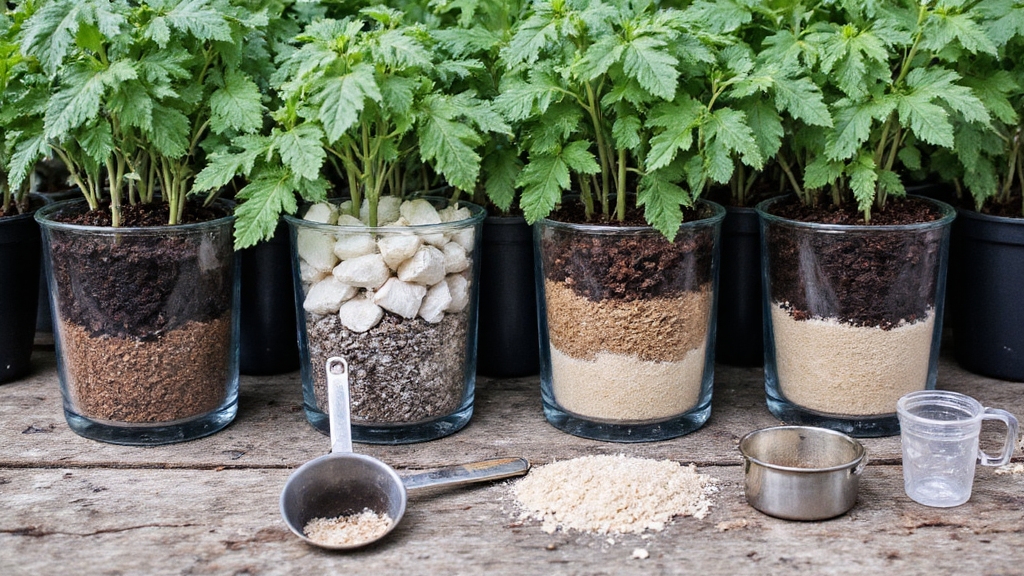
Which soil mix ratio will give your vegetable containers the best chance at producing abundant harvests? You’ll want to start with Mel’s Mix, which uses equal parts peat moss, vermiculite, and compost (1:1:1 ratio). This balanced formula retains moisture, provides excellent aeration, and delivers nutrients without extra fertilizer.
Alternatively, you can create a nutrient-rich blend using 2 parts mature compost, 1 part coconut coir, and 1 part perlite. This combination emphasizes organic matter while maintaining proper drainage. According to tips from trusted seed stores like Burpee Seeds, using high-quality seeds complements such soil mixes and enhances the growth of container vegetables.
For larger batches, mix 6 gallons each of peat moss and compost with 4.5 gallons of perlite. Remember to add ½ cup dolomite lime per 5 gallons when using peat moss to balance pH levels and provide essential calcium. These homemade mixes often provide better drainage than native soil, which is especially important for container vegetables.
Frequently Asked Questions
How Often Should I Replace or Refresh My Container Soil?
You should replace container soil every 12-18 months for most plants, though small containers under 10 inches need annual replacement. Watch for signs like compacted soil, poor drainage, moss growth, or declining plant vigor.
You can refresh soil instead by adding compost, loosening compacted areas, or replacing the top layer with fresh mix. Fast-growing plants and smaller containers require more frequent attention than larger, established plantings.
Can I Reuse Potting Soil From Previous Seasons for New Plantings?
You can reuse potting soil from previous seasons if your plants stayed healthy and disease-free. First, remove all old roots and plant debris completely.
Next, refresh the soil by mixing in fresh potting mix and slow-release fertilizer to restore nutrients and improve drainage. If you suspect any disease or pest issues, sterilize the soil using solarization or oven methods before reusing it safely.
What’s the Ideal Ph Level for Container Gardening Soil Mixes?
You’ll want to maintain your container soil’s pH between 5.5 and 7.0 for ideal plant health. Most vegetables and fruits thrive in this slightly acidic to neutral range, which maximizes nutrient absorption.
Test your soil regularly with home pH kits. If you need to raise pH, add limestone or dolomitic lime at 1-2 tablespoons per gallon of potting mix, then mix thoroughly for even distribution.
How Deep Should Containers Be for Different Types of Vegetables?
Container depth depends on your vegetable’s root system. You’ll need 6 inches for shallow-rooted crops like lettuce, spinach, and radishes.
Medium-rooted vegetables such as peas, carrots, and bush beans require 8-12 inches. Deep-rooted plants like tomatoes, peppers, and cucumbers need 12-18 inches minimum. Large vegetables including broccoli, cabbage, and squash demand 15-18 inches for proper development.
Should I Sterilize My Soil Mix Before Planting to Prevent Diseases?
You should sterilize soil mix only in specific situations. If you’re reusing old potting soil, starting seeds, or propagating cuttings, sterilization helps prevent damping-off disease and eliminates harmful pathogens.
However, if you’re using fresh commercial potting mix, it’s already sterile and ready to use. Sterilization removes beneficial microbes too, so weigh the benefits against potential drawbacks before deciding.
Conclusion
You’ve now got the knowledge to create nutrient-rich soil that’ll transform your container garden. Start with quality potting mix, add organic amendments, and follow proven ratios for success. Don’t use regular garden soil—it’ll compact and drain poorly. Layer your containers strategically, water consistently, and watch your plants thrive. With these techniques, you’ll grow healthier vegetables and enjoy better harvests throughout the growing season.

